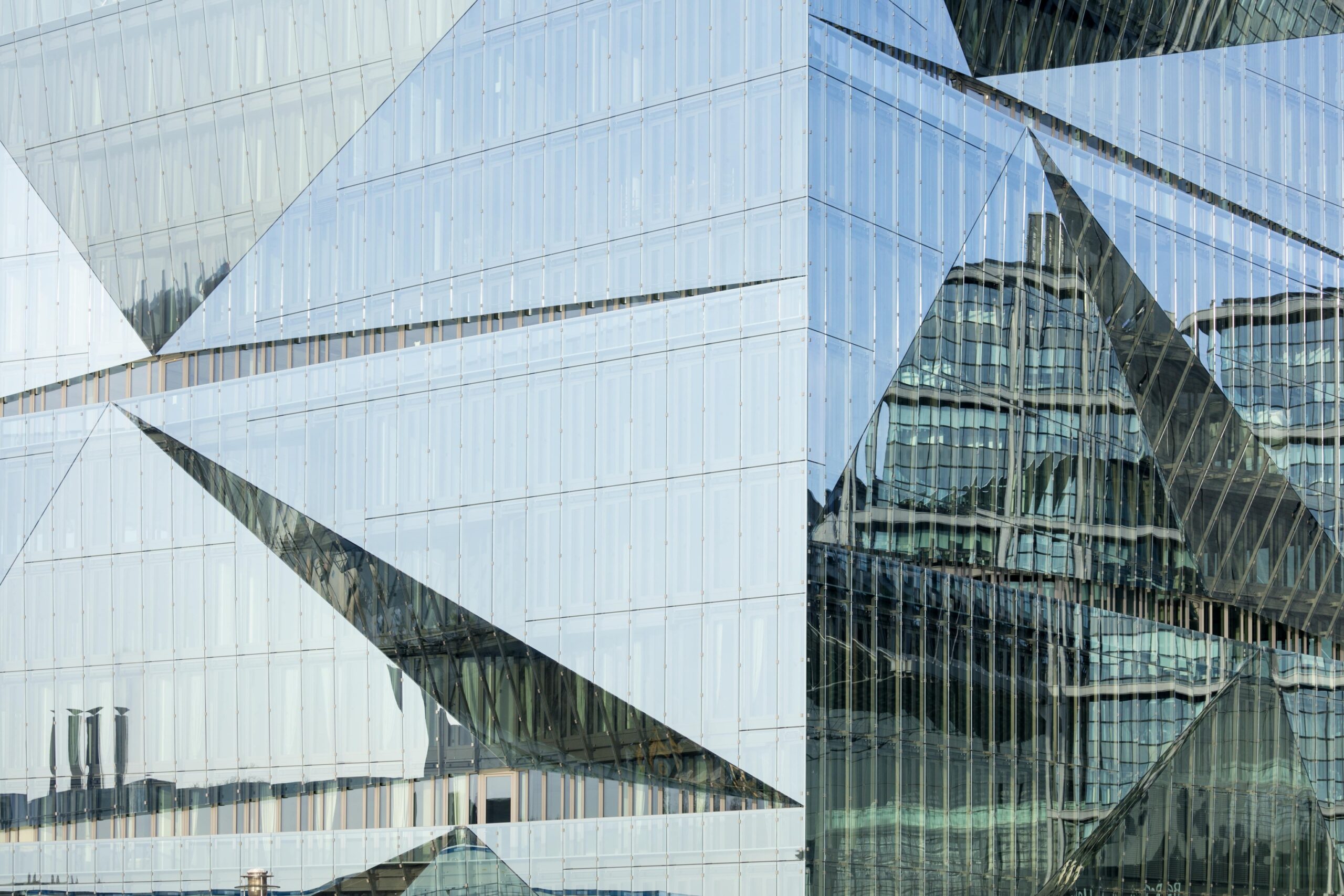Heading to the office has recently faced strong competition from working from home. But what if you felt so comfortable in your office that you preferred it to working from your couch? The CUBE Berlin, built by real estate group CA Immo and sold to the investment management company Nuveen, is intended to create both better working atmospheres for employees as well as being a far more sustainable type of building.
The focus of the building’s architects was on finding a solution to social, sustainability and economic building requirements. Getting these three factors to align is not necessarily an easy job. However, as the CUBE Berlin opened in 2020, hopes were high. It is considered a pilot project and is currently in the test phase.
What makes the CUBE Berlin special?
The façade architecture of the cubic glass building at Berlin’s main railway station is a striking structure with interlocking light-reflecting and light-absorbing geometric surfaces. But what really makes the CUBE special is found on the inside. At its heart is the so-called “brain” — a central control unit equipped with artificial intelligence (AI).
This control centre links around 3,750 sensors for recording user and operating data for use within the technical systems. In order to optimise the building’s processes, the recorded user data is analysed and evaluated, and suggestions for improvement are then derived. The systems are then optimised accordingly. In areas that are not used much, for example, the heating, ventilation, cooling or lighting systems are automatically adapted to the users or switched off when not in use, increasing energy efficiency.
In addition, heat gained from solar radiation and the building itself is used to cool the fresh air, and a special solar coating on the glass façade minimises the heating of the interior rooms in summer. According to its own information, the building even undercuts the specifications of the Energy Saving Ordinance (EnEV) by about 25 percent thanks to these technical innovations. It is also said to be able to generate around 50 percent of the total primary energy used by the building regeneratively thanks to heat recovery and the use of solar thermal energy directly in the building.
The leased companies have around 17,000 square metres of usable space at their disposal in the CUBE Berlin, which can be flexibly expanded and adapted to the needs of the employees. The possibilities of the smart office building are also evident in the operation of the office space. For example, users can book free workstations or rooms and control the room climate via an app. Of course, some processes also work automatically — such as access to the building or even operating the lift.
Is the CUBE Berlin the future for sustainable office buildings?
This state-of-the-art office building has a lot of potential. Nevertheless, it is worth taking a closer look at the planned and achieved goals in the real estate project so strongly touted as sustainable.
Buildings are a CO2 heavyweight: the construction, heating, cooling and disposal of our homes accounts for around 40 percent of Germany’s CO2 emissions. We will only achieve our climate goals if these emissions are massively reduced.
But how can we achieve the sustainable transformation of buildings and what role do digital solutions play in this? The RESET Greenbook provides answers: Building transformation – intelligently transforming houses and neighbourhoods.
On the energy savings through the AI-controlled “brain”, Markus Diekow, press officer at CA Immo, says: “Our forecast assumes a savings potential of at least 20 to 25 percent. Comparisons are difficult to make”. Unfortunately, there was no answer to this question when asked by the firm currently operating investment management company Nuveen.
The choice of the location, Washingtonplatz at the main station, or the glass design certainly offers potential for improvement. Although the imposing building receives a lot of attention, during the hot summer months, it is exposed to permanent sunlight on the sealed square without trees or other shade providers. Appropriate planting or the installation of façade greening could have a positive effect on the microclimate of the square — and thus also for the passers-by — and the prevailing biodiversity.
The CA Immo Group says it is exploiting further potential in terms of sustainability by installing photovoltaic systems in all of its current construction projects, including the Grasblau office building on Hallesches Ufer in Berlin. There, in addition to digital technologies in the building and the consideration of green areas in the planning, around 30 percent of the primary energy required is generated by solar modules.
When it comes to collecting user data, the question of how to handle this sensitive information naturally always arises in the context of data protection. The operators of the CUBE Berlin ensure that the AI-generated usage data is collected anonymously through passive infrared sensors and data bundling during evaluation.
Even though the CUBE Berlin tries to take different aspects into account, the triangle of interests of social, sustainable and economic requirements has room for optimisation and balance. Currently, many projects still seem to focus on the claim of owning an imposing and portfolio-strong property, and sustainability, as usual, comes second.
The post The CUBE Berlin: Office Building With a ‘Brain’ appeared first on Digital for Good | RESET.ORG.


